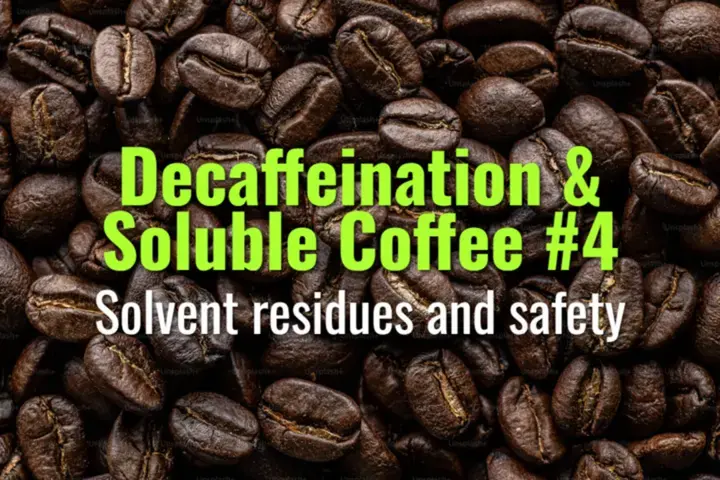Solvent residues and safety
How solvent-based decaffeination works, what residues may remain, and why regulatory bodies consider these processes safe for consumers.
- Coffee Basics Nerds
- 2 min read
Article 4 of 12 in Decaffeination & Soluble Coffee/

Common Solvents Used
- Methylene Chloride (MC): Effective at extracting caffeine while preserving flavor.
- Ethyl Acetate (EA): Naturally occurring in fruits and sugarcane, often marketed as “natural decaf.”
Residue Concerns
- Solvents sound intimidating, but regulatory standards ensure safety.
- During processing:
- Beans are steamed and rinsed multiple times.
- Residual solvent levels are reduced to trace or undetectable amounts.
Regulatory Safety Standards
- U.S. FDA: Residual methylene chloride must be ≤10 parts per million (ppm) in decaffeinated coffee. Actual levels are typically <1 ppm.
- EU Standards: Similar strict thresholds apply for both MC and EA.
- At these trace levels, exposure is far below toxic thresholds.
Health Context
- Methylene Chloride: Inhaled in high concentrations it is toxic, but trace ingestion from coffee is considered harmless.
- Ethyl Acetate: Recognized as safe (GRAS) for food use, commonly present in fruits.
- Scientific reviews confirm solvent-decaf coffee is safe for regular consumption.
Consumer Perceptions
- Specialty coffee often avoids methylene chloride decaf due to consumer skepticism.
- EA (sugarcane) and Swiss Water are promoted as more “natural” methods.
- Transparency in labeling builds consumer trust.
Summary
While solvent-based decaffeination may raise concerns, strict FDA and EU safety limits ensure residual solvent levels are negligible and safe. With proper processing, solvent-decaf coffee poses no health risk, though consumer preference often leans toward “natural” methods like Swiss Water or CO₂.